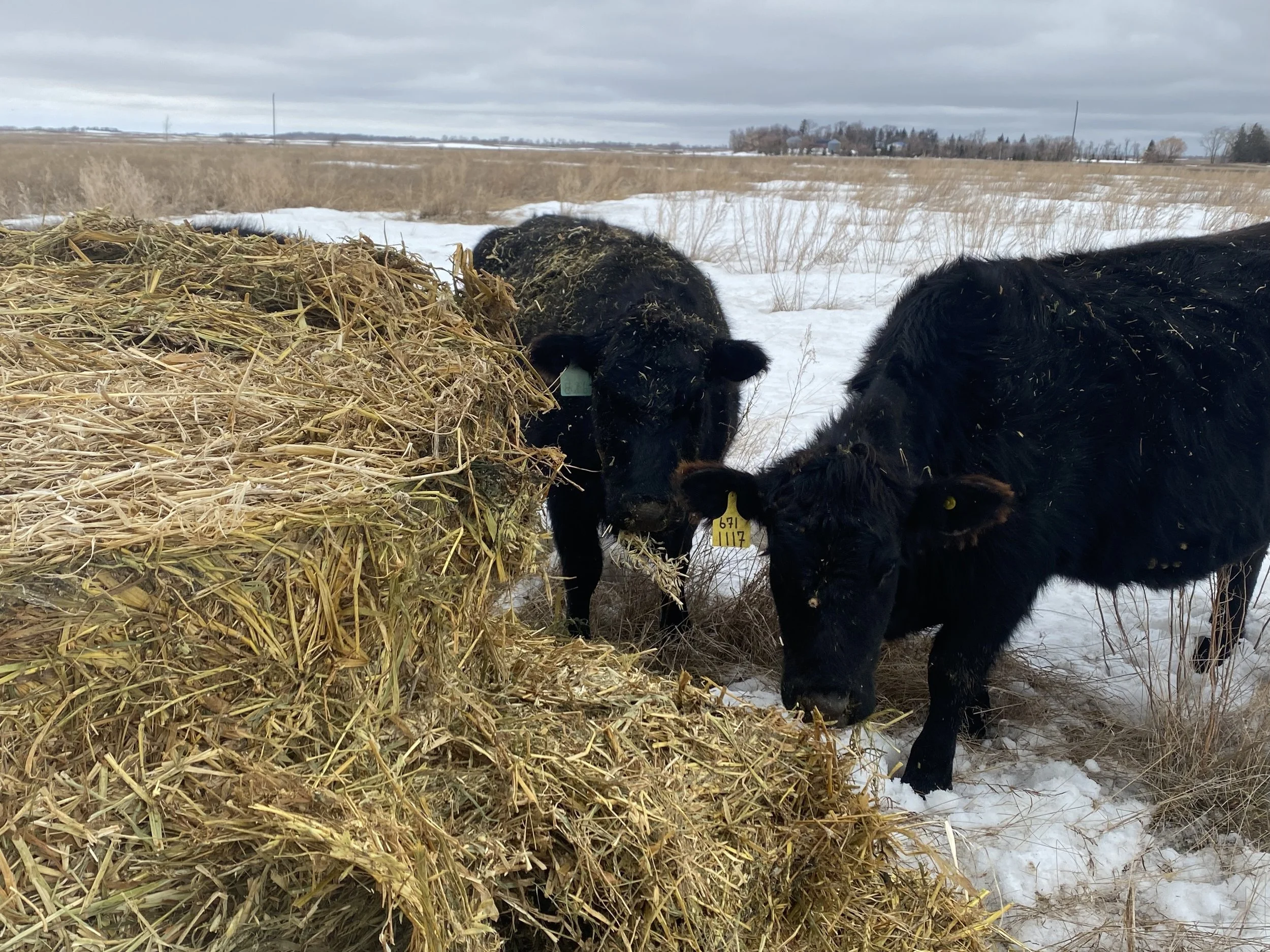Full Season Cover: Dry Hay Tips
Written by: Owen Taylor
One of my favourite parts of my job as sales manager for Covers & Co. is that I get to talk to hundreds of people about their farms. One question I frequently get about the Full Season Cover crop is “Can I put it up dry?” I wanted to take a bit of time and answer that question as well as pass on some tips I’ve picked up on my own farm over the last couple of years.
When farms started experimenting with high-diversity cover crop blends the vast majority of producers put it up as silage, either in a pit or in the form of silage bales. In a year with average moisture, there is a lot of biomass per acre, and most producers (myself included) felt it was too big of a risk to leave such a high-quality feed sitting in the field tempting Mother Nature with a rain event. For several reasons, more and more producers wanted to put up dry feed:
The cost of silage plastic has gone way up
I don’t have the labour needed for silage harvest
Easier to carry over dry feed
Easier to sell dry feed
Easier to feed dry bales during the winter
I don’t own a mixer wagon to blend my silage off
I don’t need the higher protein that silage bales give
I want to set up bales in the fall for winter bale grazing.
I agreed with all of these and for the last two years I’ve been doing more of my own acres dry. Plan A for 2023 is to do 75% of my acres dry.
Image: Feeding dry Full Season Cover bales on April 2023.
Here's a couple of things I’ve been doing to help with the dry down time:
Lay your swath as wide as possible. I lay mine approximately 9ft wide. Yes, it means I drive on the swath while cutting, and I do have to rake it before I can bale it, but I believe doing this gains me at least one day of dry downtime. Perhaps two. Another benefit of laying the swath this wide is that if you do get rain on it the wider swath allows more rain to go “through” to the ground.
I crimp my swath as aggressively as I can. Because of the aggressive crimping, I do shell some barley, oats and peas but the feed value comes from the vegetative plant, not the immature kernels. If you plan to bale your crop dry DO NOT swath it. It must be crimped.
Image: Baling the Full Season Cover on my farm August 10th, 2022
This one might raise a few eyebrows, but I consider my Full Season Cover dry enough to bale at 18%-20% moisture or lower. Due to impatience and rain in the forecast, I baled 50 acres at these moisture levels 2 years ago. I was concerned about the bales heating (and mold), but when I started feeding the bales in the winter, they were of excellent quality. I baled all my dry acres at this moisture this past season and had excellent results again. As wonderful as moisture testers are - the good old “feel” test that served our ancestors for decades is still a great tool as well. If it feels dry in your hands, it is unlikely to heat in a bale. There are also products on the marketplace that can be sprayed on the swath while baling that will inhibit mold growth and allow a bale at 20+%.
Your dry down time will be greatly affected by the weather after you’ve cut it. Hot and sunny vs. cool and cloudy while the swath lays could easily gain you 2 days. Generally speaking 7-10 days and it will be ready to bale.
Depending on what class of livestock you’re feeding, ask yourself what protein levels you need. Full Season silage will typically be in the 13-16% protein range and dry it will be in the 11-13% range. If you happen to have spring calving cows, for example, you don’t need 14% protein to get them through the winter. 11% is perfect, so the added cost of making silage may be an unnecessary cost.
I hope these tips and my personal experience will help make your decision a bit easier. No one knows your own farm and what is best for your operation better than you!
As always, please reach out to me if you have any more questions.
With gratitude,
Owen Taylor


